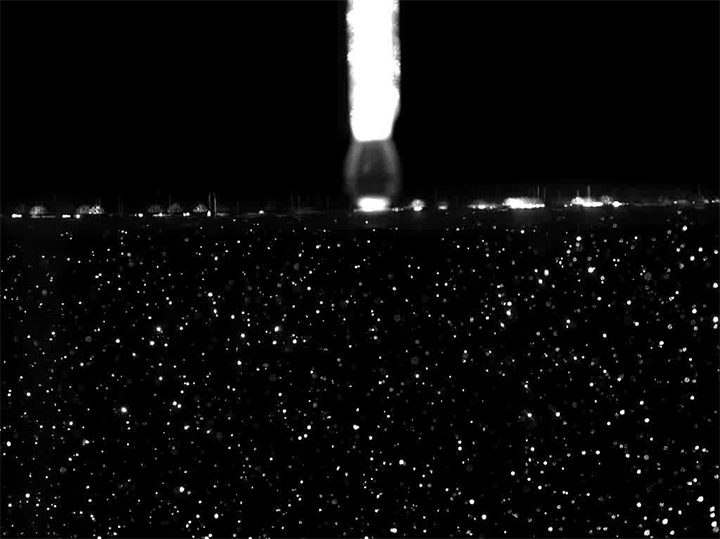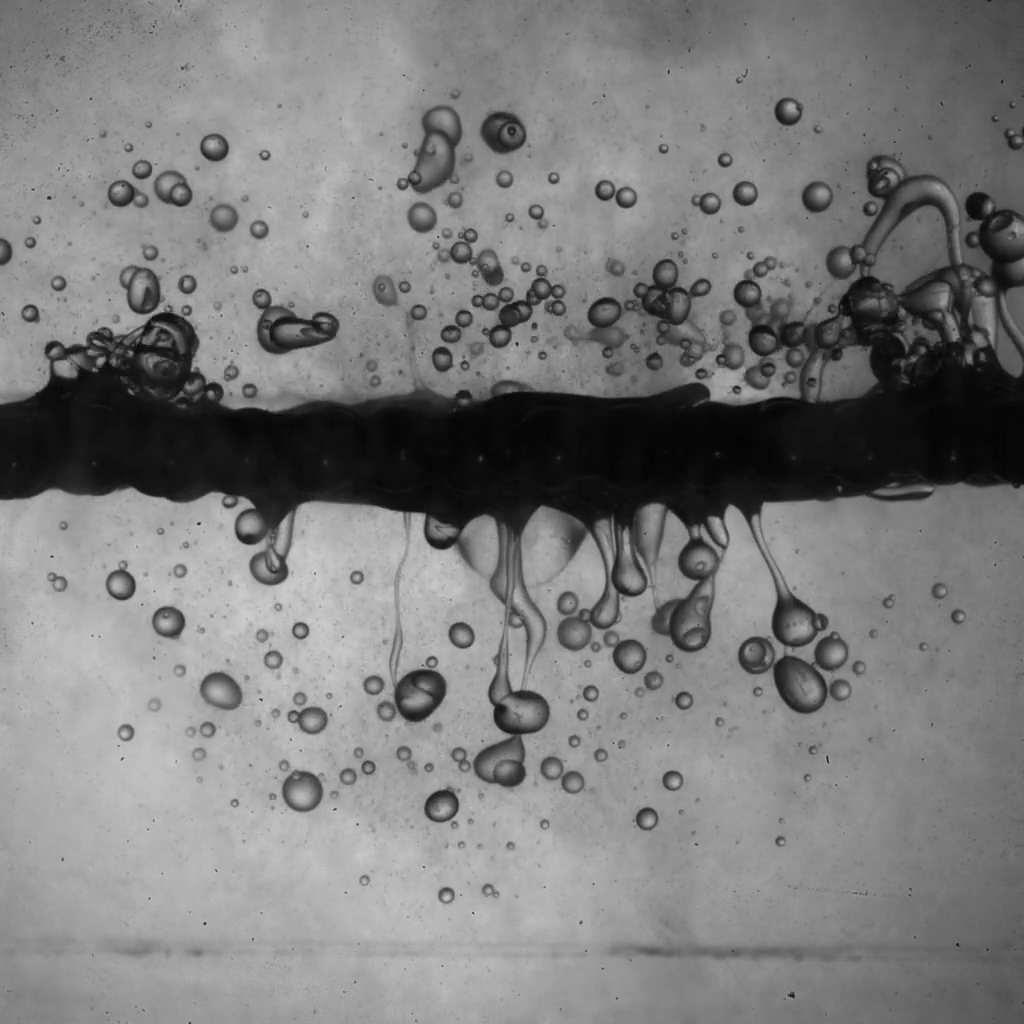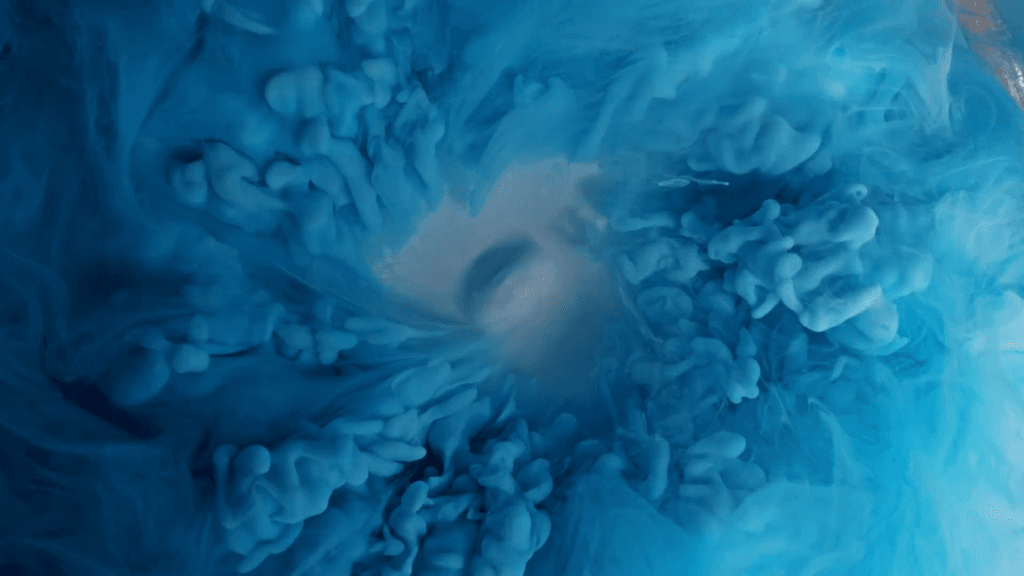Vortex rings blown from Mount Etna’s vents drift through the dawn light in this beautiful image from Dario Giannobile. Little is required to create vortex rings — they are a puff of fluid shaped by an orifice — but they are relatively unusual to see around volcanoes. Etna is an exception; it happens to have one or more vents that frequently form rings. Their shape and the venting pattern of the volcano must be unusually well-suited to ring formation. (Image credit: D. Giannobile; via APOD)
Search results for: “vortex”

Vortex Below
When a drop of ethanol lands on a pool of water, surface tension forces draw it into a fast-spreading film. Evenly-spaced plumes form at the edges of the film, then the film stops spreading and instead retracts. All of this takes place in about 0.6 seconds. But, as the image above shows, there’s more that goes on beneath the surface. A vortex ring forms and spreads under the film, driven by the shear layer under the edge of the plumes. Here, the vortex ring is visible in the swirling particles near the water surface. (Image and research credit: A. Pant and B. Puthenveettil)

Vortex Rings From a Square Outlet
When a vortex ring forms, it’s often from fluid forced through a round outlet, whether that’s someone’s mouth, a pipe, or a dolphin’s blowhole. But vortex rings can come from other shapes, too. This video shows us several examples, including slots and square outlets. The vortex rings blown from a square outlet are messier but still recognizable. The slot-shaped outlets produce even neater results, including twin vortex rings that move parallel to one another! (Image, video, and research credit: B. Steinfurth et al.)

Draining By Vortex
Unstop your bathtub and the draining water will form a tiny tornado-shaped vortex over the outlet. Four centuries ago Torricelli developed a mathematical equation to describe how long it would take to empty the container, based on the height of the fluid in the tank. Now researchers have made a more generalized version of Torricelli’s law, based on experiments with a rotating tank. They found that measuring the water level above the outlet (i.e., taking into account the surface level dip caused by the vortex) gave better agreement. The stronger the vortex, the lower the surface dips and the slower the container drains. (Image and research credit: A. Caquas et al.)

Washing By Vortex Ring
Spraying a surface clean with a jet of fluid can be an energy-intensive operation. But a recent experiment shows that pulsed flow — which creates vortex rings — could be a viable cleaning alternative. Here we see vortex rings impacting a porous, beaded surface that’s covered in oil. Vortex rings with lots of rotation actually pass through the beads, knocking oil off both the front and back surfaces (Image 1). Even with a lower rotation rate, a vortex ring can still help clean the upper surface (Image 2). (Image and research credit: S. Jain et al.; via APS Physics)

Turbulence From Vortex Rings
When vortex rings collide, they reconnect into smaller, rings that eventually break down into chaos. Here, researchers experiment with colliding multiple vortex rings — focusing on an eight-ring collision. When they collide rings over and over, it creates a zone of isolated turbulence at the heart of the collisions.
Many of the theories and predictions that exist around turbulence assume that the flow is homogeneous and isotropic; what this means is that the (statistical) characteristics of the flow are the same in every direction. In reality, this kind of flow isn’t always easily achieved, which makes testing theoretical predictions challenging.
What’s neat about this set-up is that you get this desired turbulence in a very controlled way. It’s easy to tune the size and energy of your vortex rings, and those tweaks allow you to observe what — if any — changes occur in the resulting turbulence. (Image and video credit: T. Matsuzawa et al.)

















